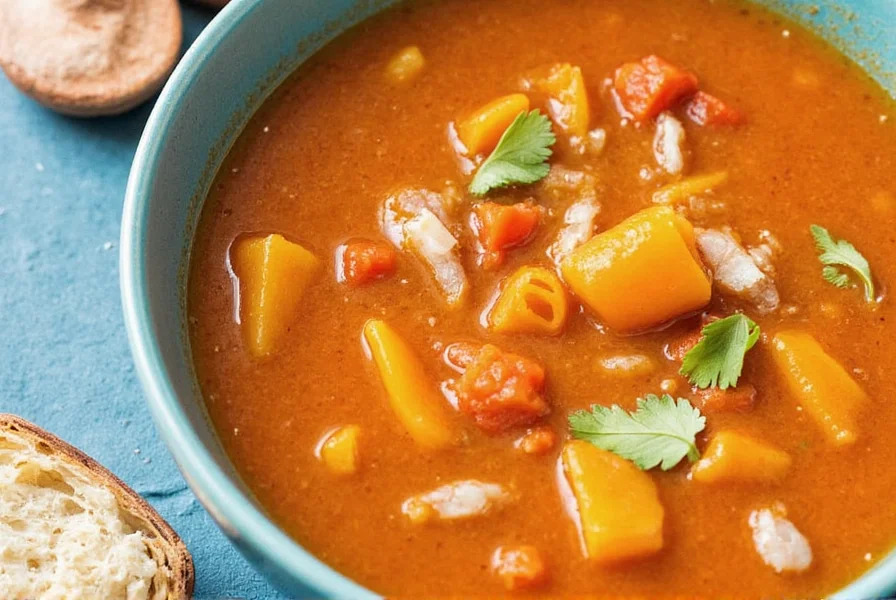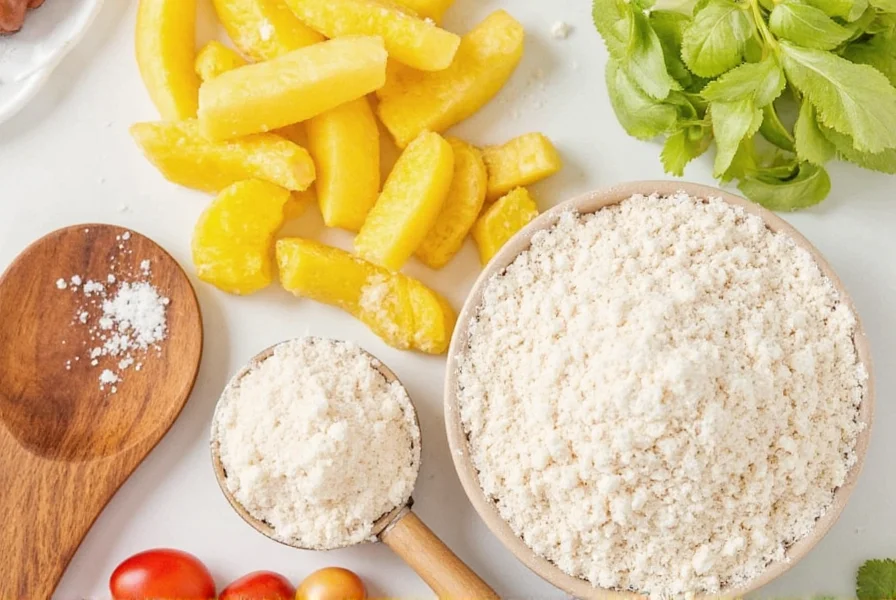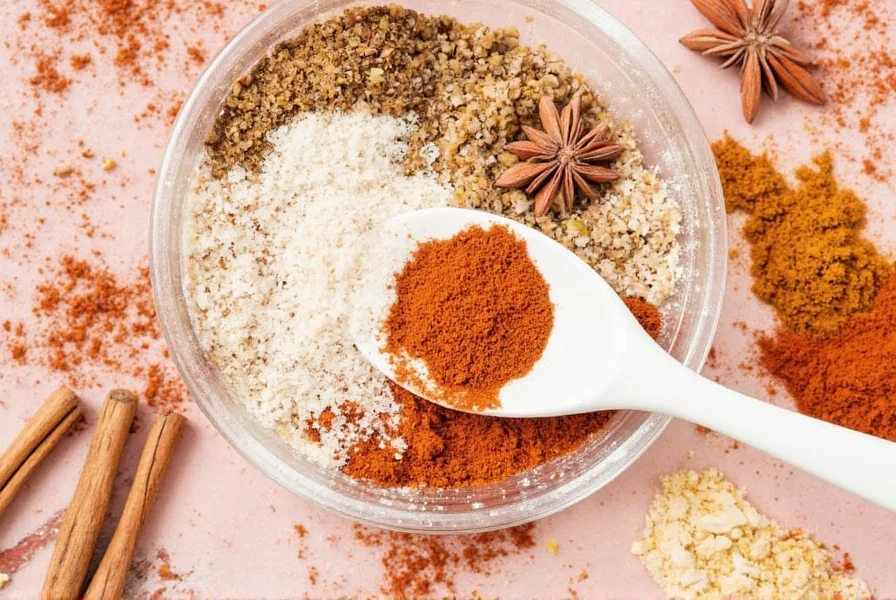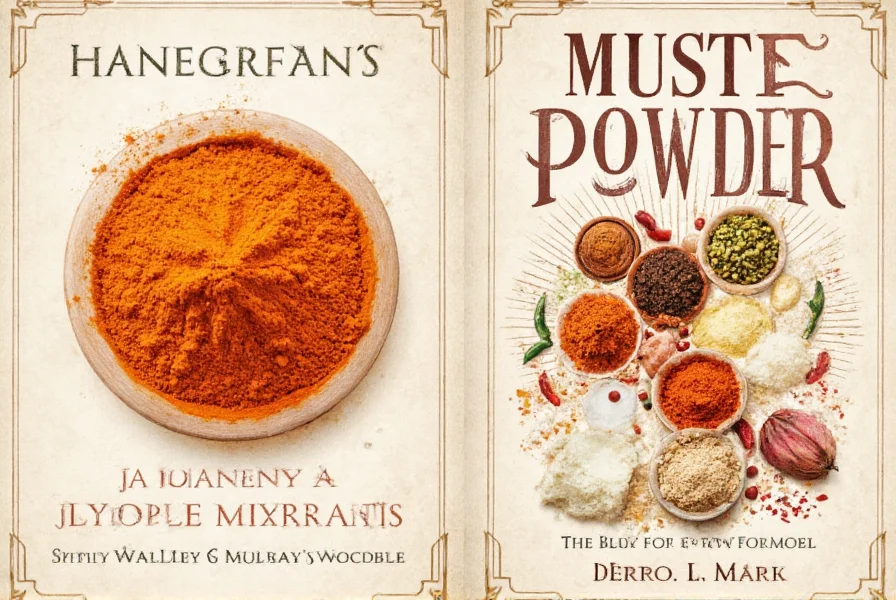What Is Mustard Powder and How to Use It Effectively
Mustard powder is ground mustard seeds that delivers concentrated flavor and versatile culinary applications. Unlike prepared mustard, it contains no liquid ingredients, giving you precise control over flavor intensity in recipes. When mixed with water, mustard powder activates enzymes that create its signature heat and pungency - a chemical reaction that begins within 10 minutes and peaks at 15-20 minutes.
Top 10 Mustard Powder Applications with Exact Measurements
These practical uses include specific ratios for perfect results every time:
1. Flavor-Boosted Marinades (Perfect Ratio: 2:1)
Combine 2 tablespoons mustard powder with 1 tablespoon each of olive oil, apple cider vinegar, and honey. Add 1 teaspoon garlic powder and ½ teaspoon black pepper. Marinate proteins for 2-4 hours for optimal flavor penetration without overpowering.

2. Restaurant-Quality Gravies (1 Teaspoon per Cup)
Add exactly 1 teaspoon mustard powder to every cup of gravy during the final 5 minutes of cooking. This creates subtle depth without detectable mustard flavor - professional chefs' secret for elevating pan sauces.
3. Activated Mustard Sauce (Water Temperature Matters)
For maximum heat: Mix 1 tablespoon mustard powder with 2 tablespoons cold water. Wait 15 minutes before use. For milder flavor: Use hot water which deactivates the heat-producing enzyme myrosinase. This scientific approach gives precise control over pungency.
4. Vegetable Roasting Enhancement (¼ Teaspoon per Pound)
Toss vegetables with ¼ teaspoon mustard powder per pound before roasting. Works especially well with root vegetables like carrots, potatoes, and beets, creating complex caramelization without bitterness.

5. Baking Flavor Balancer (1/8 Teaspoon per Cup of Flour)
Add 1/8 teaspoon to bread dough or 1/4 teaspoon to cornbread per cup of flour. The slight acidity balances sweetness in baked goods while enhancing other flavors without detectable mustard taste.
6. Pickling Brine Upgrade (1 Teaspoon per Quart)
Include 1 teaspoon in pickle brine for enhanced flavor complexity. Mustard powder's preservative qualities also help maintain crispness in quick refrigerator pickles.
7. Soup and Stew Depth (½ Teaspoon per Quart)
Add ½ teaspoon during the last 10 minutes of cooking. This small amount creates umami depth without making the soup taste mustardy - particularly effective in bean soups and stews.
8. Salad Dressing Emulsifier (1 Teaspoon per ¼ Cup Oil)
Use 1 teaspoon mustard powder per ¼ cup oil in vinaigrettes. The powder helps stabilize the emulsion better than prepared mustard while providing more controlled flavor.
9. Dry Rubs for Meat (1 Tablespoon per Cup of Rub)
Incorporate 1 tablespoon per cup of dry rub mixture. Mustard powder helps the rub adhere to meat while creating a flavorful crust during cooking without burning.
10. Global Spice Blends (Exact Proportions)
Indian curry: 1 tsp mustard powder + 2 tsp cumin + 1 tsp turmeric. Ethiopian berbere: 2 tsp mustard powder + 1 tbsp paprika + 1 tsp cardamom. These precise ratios create authentic flavors without overpowering.
Mustard Powder Buying Guide: Expert Selection Criteria
| Selection Factor | Expert Recommendation | Why It Matters |
|---|---|---|
| Seed Type | Brown mustard seeds for heat, white for mildness, or blend | Brown seeds contain more sinigrin (heat compound) - essential for proper activation |
| Grind Consistency | Fine for sauces (sifts easily), medium for rubs | Proper particle size ensures even dissolution and activation |
| Packaging | Opaque, airtight containers with freshness dates | Light and air degrade myrosinase enzyme - critical for flavor development |
| Ingredients | 100% mustard seed only (no fillers) | Additives prevent proper enzyme activation and alter flavor profile |
Mustard Powder Storage & Shelf Life Data
Proper storage preserves the enzyme activity essential for flavor development:
| Storage Method | Flavor Potency Timeline | Enzyme Activity |
|---|---|---|
| Original packaging, pantry | 6-9 months peak flavor | Declines steadily after 6 months |
| Airtight container, pantry | 12-18 months peak flavor | Maintains 80%+ activity for 1 year |
| Airtight container, freezer | 24+ months peak flavor | Preserves 95%+ enzyme activity |

Frequently Asked Questions: Scientifically Verified Answers
What's the exact conversion between mustard powder and prepared mustard?
1 teaspoon mustard powder + 3 teaspoons cold water = 1 tablespoon prepared mustard. Wait 15 minutes for full activation. For direct substitution in recipes: 1 tablespoon prepared mustard = 1 teaspoon mustard powder + 1 teaspoon liquid from recipe.
How does water temperature affect mustard powder activation?
Cold water (below 40°F/4°C) preserves myrosinase enzyme activity, creating maximum heat that develops over 15-20 minutes. Hot water (above 140°F/60°C) denatures the enzyme, producing milder flavor immediately. Room temperature water creates moderate heat with 10-minute development time - ideal for most culinary applications.
What's the precise shelf life of mustard powder under different conditions?
Properly stored in airtight container away from light: 24 months at room temperature with 70-80% flavor retention, 36 months in freezer with 90%+ retention. After 24 months at room temperature, enzyme activity drops below 50%, significantly reducing flavor development capability. Discard if clumping occurs or aroma fades.
How does mustard powder compare nutritionally to whole seeds?
Per tablespoon: Mustard powder contains 15 calories, 1g fiber, 120mg omega-3s, and 20% of daily selenium. Whole seeds contain identical nutrients but require chewing for full absorption. Powder provides immediate nutrient availability and higher surface area for enzyme activation, making its health benefits more accessible in cooking applications.
What's the exact ratio for substituting mustard powder in canning recipes?
For safe canning: Use ½ teaspoon mustard powder per pint instead of seeds. The finer particle size distributes evenly in liquid, preventing separation during processing. Never substitute prepared mustard in canning recipes as added vinegar alters pH levels required for safe preservation.
Professional Application Insights
Food scientists confirm mustard powder's unique properties make it indispensable in professional kitchens. The controlled release of allyl isothiocyanate (the compound responsible for heat) creates complex flavor development unmatched by prepared mustard. When used at precise ratios (0.25-0.5% of total recipe weight), it enhances umami without detectable mustard flavor - the 'secret ingredient' behind many restaurant-quality dishes.
For optimal results, always activate mustard powder separately before incorporating into recipes. This 15-minute waiting period allows complete enzymatic reaction, creating stable flavor compounds that won't dissipate during cooking. Understanding these scientific principles transforms mustard powder from a simple spice into a precision culinary tool.











 浙公网安备
33010002000092号
浙公网安备
33010002000092号 浙B2-20120091-4
浙B2-20120091-4